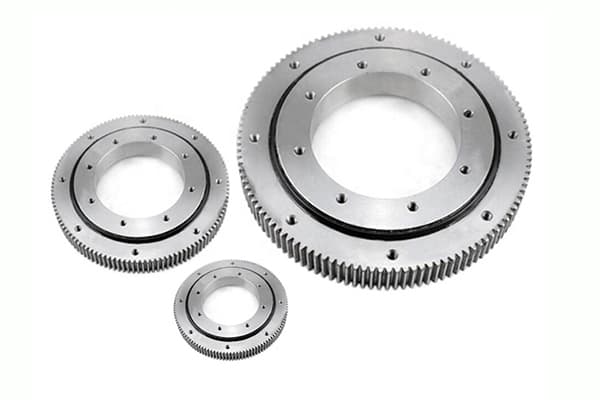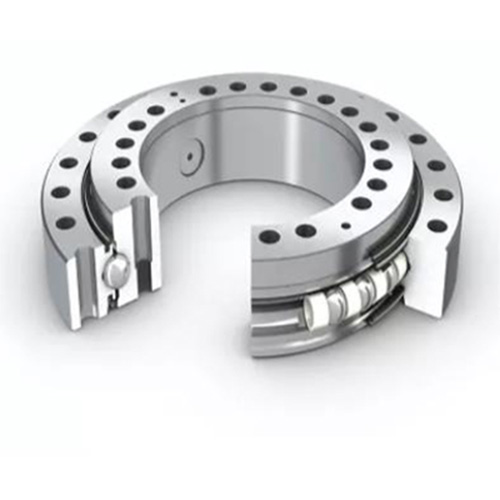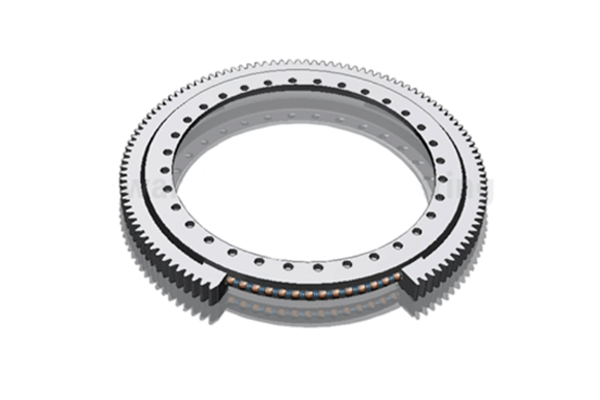
Your Complete Guide to the Flange Slewing Bearing: From Lightweight Turntable Rings to Heavy-Duty Internal Gear Designs
2025-08-27
Hello, my name is Allen. As the owner of a factory here in China that specializes in manufacturing slewing bearing solutions, I’ve spent years helping engineers and procurement officers like Mark Thompson from the USA find the perfect rotational components. Mark is a decisive leader who needs high-quality parts without breaking the budget. He, like many of you, faces challenges with complex assemblies and tight project timelines. One of the most effective solutions we offer for these challenges is the flange slewing bearing. This guide is born from countless conversations and late-night design sessions, aimed at demystifying this incredibly versatile slewing ring. We will explore everything from a light slewing bearing for automation to a robust slewing bearing internal gear model, giving you the practical insights you need to simplify your designs, reduce costs, and avoid common purchasing pitfalls.
What is a Flange Slewing Bearing, and How is it Different?
At its core, a flange slewing bearing is a special type of slewing ring where one of the rings—either the inner or outer—is manufactured with an integrated L-shaped protrusion, known as a flange. Think of it this way: a standard slewing bearing is like an unframed picture; you need to build a separate frame or housing to mount it securely. The flange type slewing bearing, on the other hand, comes with the frame already built-in. This seemingly simple design modification has profound implications for mechanical assembly.
The flange contains a series of mounting holes, often threaded, that allow the bearing slewing unit to be bolted directly to a support structure. This eliminates the need for a separate retaining ring, housing, or machined shoulder that would otherwise be required to locate and secure a standard slewing ring bearing. The result is a much simpler, more integrated mounting arrangement. This design is particularly valuable in applications where space is limited or where reducing the total number of components is a priority. It provides a clean, efficient, and robust solution for achieving smooth rotational movement.
This integration is what sets the flange slewing bearing apart. While it performs the same fundamental function as any other slewing bearing—supporting combined axial, radial, and moment loads—its form factor is optimized for ease of use and structural efficiency. Whether you’re looking at a light series turntable bearing or a more complex roller slewing model, the presence of a flange signals a design focused on simplifying the overall machinery assembly.

What are the Main Advantages of Using a Flange Type Slewing Bearing?
For engineers and designers, the benefits of adopting a flange slewing bearing are immediate and significant. The primary advantage is the simplification of the surrounding structure. By integrating the mounting feature directly into the outer ring or inner ring, you reduce the complexity and cost of your assembly. There’s no need to design, source, and install a separate locating component, which saves time in both the design phase and on the assembly line.
Secondly, the flange type design often leads to a more compact structure. Because you don’t need the extra space for external clamps or housings, the overall footprint of the rotational system can be reduced. This is a critical factor in modern machinery design, especially in fields like robotics and medical equipment where every millimeter counts. This lightweight approach makes it an excellent choice for a light slewing bearing application where minimizing size and weight is paramount.
Finally, a flange can improve the overall rigidity and accuracy of the mounting. The direct connection between the slewing bearing and the structure, secured by a pattern of bolts, creates a very stiff and stable interface. This helps maintain the precision of the system by minimizing deflection under load. This is especially true for the light duty flange models, which provide a surprising amount of stability for their size, making them a superior choice for many applications over a standard type slewing bearing.
What Kinds of Flange Slewing Bearings Can I Choose From?
The flange is a mounting feature; the internal heart of the slewing bearing can still be configured in several ways to handle different load requirements. As a professional manufacturer, we can produce a flange slewing bearing with nearly any internal raceway geometry.
Here’s a breakdown of the most common types:
| Bearing Type | Internal Structure | Best For |
|---|---|---|
| Four Point Contact Ball Slewing | A single row of balls in a specially designed raceway that allows a single ball to handle axial, radial, and moment loads. | The most common and versatile type for light duty to medium-duty applications. Excellent for a light slewing bearing. |
| Cross Roller Slewing Bearing | A single row of cylindrical rollers arranged at 90-degree angles to each other. | High rigidity, high precision, and high load capacity in a compact space. Ideal for robotics and machine tools. |
| Double Row Ball Slewing Bearing | Two rows of balls, typically in a four-point contact arrangement, to significantly increase moment load capacity. | Applications with high overturning moments, such as small cranes or jib arms. |
| Three Row Roller Slewing | Three independent rows of rollers, each designed to handle a specific load (axial, radial, overturning moment). | Heavy-duty applications requiring the maximum possible load capacity, such as in large excavator or crane machinery. |
The most frequently requested style is the single row four point contact ball slewing bearing. Its balanced performance and cost-effectiveness make it a great fit for a wide range of turntable applications. However, for applications demanding superior stiffness and accuracy, the cross roller slewing bearing is often the superior choice. The selection depends entirely on the specific forces at play in your machinery.

How Do Gearing Options (Internal, External, Without Gear) Work with a Flange?
Just like standard slewing bearings, a flange slewing bearing can be manufactured with integrated gear teeth to facilitate a driven rotation. This combination of a secure mounting flange and a built-in gear creates a highly efficient and compact rotational drive unit. You have three main options for this gear slewing configuration.
- Slewing Bearing with Internal Gear: In this design, the gear teeth are machined on the inside diameter of the non-flanged ring. A slewing bearing internal gear is an excellent choice for protecting the gear mechanism from external debris and accidental impact. It also allows for a very clean and compact design, as the drive motor and pinion can be tucked away within the center of the slewing ring.
- Bearing with External Gear: This is the most common configuration, where the gear is on the outside diameter of one of the rings. The external gear is easily accessible for inspection and maintenance and often represents a more cost-effective solution. A gear flange slewing bearing with an external gear is simple to integrate with standard drive systems.
- Without Gear: For applications where rotation is driven by a belt, a chain, a direct-drive motor, or is simply done manually, the flange slewing bearing can be supplied without gear teeth. This ungeared version provides all the mounting benefits of the flange for non-driven or indirectly driven applications.
The choice of a ring with gear or without depends entirely on your machine’s drive system. A flange can be incorporated with any of these gear slewing styles to create the perfect type slewing bearing for your needs.
Which Applications are Ideal for a Light Duty Flange Slewing Bearing?
The light series or light type slewing bearing with a flange is one of the most versatile components in our portfolio. Its lightweight design, combined with the ease of mounting, makes it a perfect fit for a wide array of modern machinery where high loads are not the primary concern.
We often see this type slewing bearing used in:
- Automation and Robotics: Small robotic arms, pick-and-place units, and automated inspection systems benefit from the compact and lightweight nature of a ball slewing flange bearing. One excellent example of a versatile product for this is the I.1166.20.00.B Ball Slewing Bearing.
- Medical Equipment: The smooth, precise rotation of a light slewing bearing is critical for patient positioning tables, scanning equipment, and surgical lighting systems.
- Food and Packaging Machinery: Rotary filling machines, bottle cappers, and labeling turntables use flange bearings for their simple, clean installation. Stainless steel versions are often specified for these environments.
- Solar Tracking Systems: The flange provides a simple way to mount panels or reflectors on single-axis or dual-axis trackers, ensuring they can follow the sun accurately.
- Antenna and Satellite Dishes: A flange slewing ring is perfect for the azimuth and elevation axes of small to medium-sized positioning systems.
In all these cases, the flange slewing bearing acts as a problem-solver, providing a reliable turntable bearing solution that simplifies the overall design and assembly process.

Can a Flange Slewing Ring Handle Heavy-Duty Machinery?
Absolutely. While the flange slewing bearing is popular in light duty applications, it is by no means limited to them. By using more robust internal geometries like a double row ball design or, for extreme loads, a three row roller slewing configuration, a flange can provide a secure mounting solution for surprisingly demanding applications. The principle is the same: the flange simplifies the connection to the machine’s superstructure.
For instance, small mobile cranes, truck-mounted hoist systems, and compact excavators can utilize a heavy-duty gear flange slewing bearing. In these machines, the slewing ring must not only support axial and radial loads but also handle the significant moment loads created when lifting an object at a distance. The flange ensures the slew bearing is rigidly connected, allowing it to safely transfer these powerful forces.
The key is in the engineering. A flange designed for a heavy-duty roller slewing bearing will be thicker and feature a more substantial bolt pattern than one for a lightweight slewing application. It’s all about matching the slewing ring bearing‘s construction—both internal and external—to the specific demands of the machinery. We’ve provided flange bearings for everything from forestry equipment to wind turbines, proving the adaptability of this design. It can bear axial and other forces to prevent overturn.
What Customization Options are Available for a Flange Slewing Bearing?
One of the major pain points for procurement officers like Mark is finding a supplier who can accommodate specific design needs rather than just offering off-the-shelf parts. This is where the ability to customize becomes critical. A flange slewing bearing is highly customizable, allowing us to tailor it to your exact requirements.
Common customization requests for a slewing ring bearing include:
- Custom Mounting Holes: We can adjust the number, size, spacing, and threading of the holes in the flange to match your existing structure perfectly.
- Specialized Seals: Depending on the operating environment (e.g., dusty, wet, or cleanroom), we can equip the slewing bearing with different seal materials and designs to provide optimal protection for the internal raceway. The sealing belt is a critical component.
- Material and Coating Options: We can manufacture the slewing ring from stainless steel for corrosion resistance or apply special coatings for enhanced durability.
- Precision and Tolerance: For applications requiring high accuracy, we can manufacture the flange slewing bearing to a tighter tolerance class, minimizing runout.
- Gear Modifications: We can alter the module, pressure angle, and quality level of the internal gear or external gear to match your drive pinion.
Our goal is to deliver a slewing bearing that is a true plug-and-play component. By addressing these special customized requirements during the manufacturing process, we save you time and money during assembly.
How Do You Find a Reliable Flange Slewing Bearing Supplier?
Choosing the right manufacturer and supplier is arguably the most critical step. A good partner provides more than just a slewing ring; they provide peace of mind. Based on my experience working with clients worldwide, here’s what you should look for in a supplier.
First, evaluate their engineering capability. Can they understand your application and help you select the right type slewing bearing, whether it’s a four point contact slewing or a complex cross roller design? A reliable supplier will act as a consultant. Second, inquire about their quality control processes. Ask for documentation on material traceability and inspection reports. Consistent quality is non-negotiable for a critical component like a slewing bearing.
Third, communication is key. Your supplier should be responsive, transparent about lead times, and able to provide clear technical information. This prevents the shipment delays and miscommunications that can derail a project. Finally, look for flexibility. The best partners are willing to customize their products, like the platform turntable ring, to meet your specific needs. A supplier who can provide a tailored slewing ring bearing solution is invaluable.
What are the Key Installation and Maintenance Steps?
Proper installation and maintenance are essential to ensure a long and reliable service life for your flange slewing bearing. Even the highest quality slewing ring will fail prematurely if not installed correctly. The first step is to ensure the mounting surface is perfectly flat and rigid. Any distortion in the surface will transfer to the slewing bearing, damaging the raceway and compromising performance.
When bolting the flange to the structure, it is crucial to tighten the bolts in a star pattern and to the correct torque specification. This ensures even clamping pressure and prevents the slewing ring bearing from being distorted. Once installed, the gear slewing mesh (if applicable) should be checked to ensure proper backlash and contact pattern.
Maintenance for a sealed slewing bearing is straightforward. It primarily involves periodic re-lubrication through the grease fittings. The frequency depends on the operating conditions, but a regular schedule will protect the internal components from wear and corrosion. The condition of the seal should also be visually inspected to ensure it remains intact and effective. Following these simple steps will maximize the life of your ball slewing or roller slewing bearing.
Why is Precision So Important in a Flange Roller or Ball Bearing?
Precision is the cornerstone of performance in any slewing bearing, and this is especially true for the flange type. The manufacturing tolerance of the slewing ring directly impacts the rotational accuracy, friction, and lifespan of your entire system. For applications like machine tools, medical scanners, or robotic arms, high precision is not a luxury—it’s a necessity.
In a cross roller slewing bearing, for example, tight control over the geometry of the raceways and rollers is what allows the bearing to achieve its signature rigidity and smooth motion. Similarly, in a four-point contact ball slewing bearing, the conformity between the balls and the raceway determines the load capacity and rotational smoothness. Any deviation can lead to increased friction, vibration, and premature wear.
Our commitment to precision is reflected in our rigorous quality control. We use advanced measuring equipment to ensure that every slewing bearing—from the simplest light duty turntable bearing to the most complex three row roller slewing unit—meets or exceeds the specified tolerances. This focus on precision is our guarantee that the slewing ring bearing you receive will perform flawlessly in your application.
Key Takeaways
The flange slewing bearing is a powerful tool for any engineer or designer looking to create a more efficient, compact, and cost-effective rotational system. Its integrated design solves many common assembly challenges.
Here are the most important points to remember:
- Simplicity by Design: The integrated flange eliminates the need for separate mounting components, simplifying assembly, reducing parts count, and saving space.
- Versatility in Application: From a light slewing bearing in automation to a heavy-duty roller slewing unit in a crane, the flange design is adaptable to a vast range of load requirements.
- Full Range of Options: You can combine the flange feature with any internal geometry (four point contact ball, cross roller, etc.) and any gear configuration (internal gear, external gear, or without gear).
- Customization is Key: A good supplier can customize the flange slewing ring to your exact specifications, including mounting holes, seals, and materials.
- Quality and Precision Matter: The reliability of the slewing bearing depends on the manufacturer’s commitment to tight tolerances and rigorous quality control. Always partner with a supplier you can trust.





